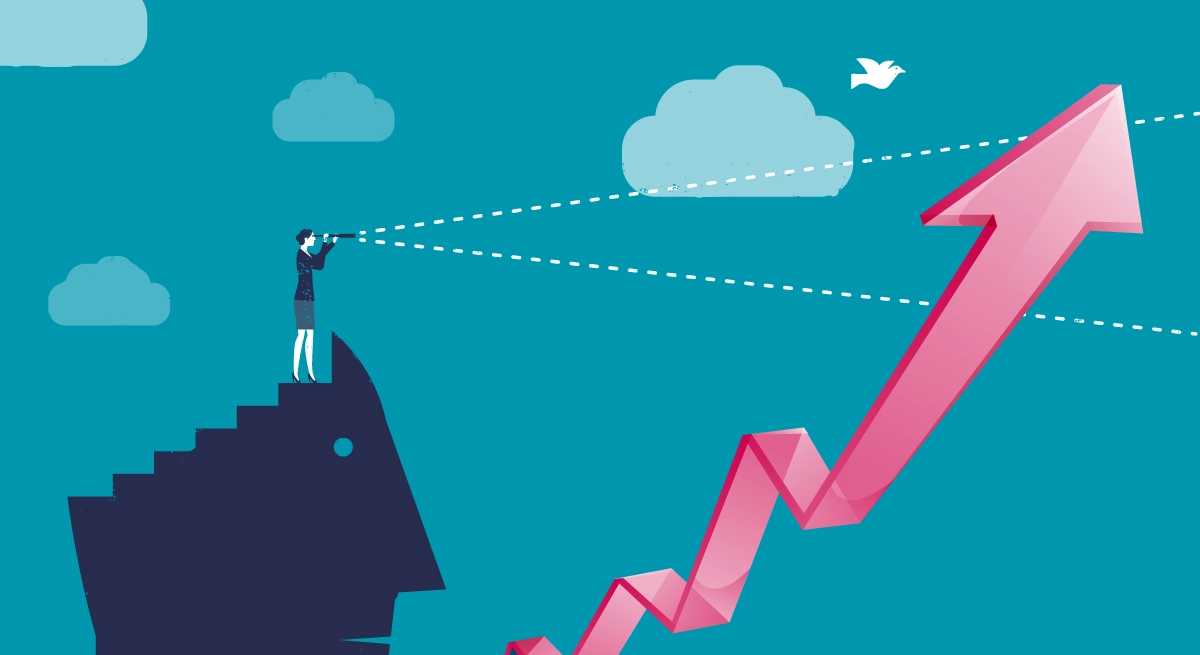Predictive Modeling: Types, Benefits, and Techniques
In an era where data reigns supreme, the quest to understand and anticipate future trends has led to the development of sophisticated analytical techniques. Among these, the exploration of what predictive modeling stands out as a beacon for organizations and researchers alike, guiding them through the vast seas of data towards actionable insights and informed decisions.
This approach has not only revolutionized how we perceive data but also how we utilize it across various sectors, from healthcare to finance, and from marketing to environmental conservation. As we delve deeper into the intricacies of this method, it becomes clear that it is more than just a tool; it’s a transformative process that shapes our approach to problem-solving and strategic planning in the digital age.

Predictive modeling is one of the most critical components of predictive analytics. The latter uses historical data to predict future outcomes. Conversely, predictive modeling is a mathematical process allowing you to predict future activity, behavior, and trends through data analysis. This type of data analytics is based on current and historical data.
Predictive analytics, a branch of advanced analytics, is gaining more significance in enabling businesses to leverage big data to identify risks and opportunities. According to Statista, the global predictive analytics market revenue is expected to account for $41.52 billion in 2028, up from $5.29 billion in 2021.
Below, we cover all the need-to-know information about predictive modeling, its pros, and the biggest assumption about its capabilities.
What is Predictive Modeling
Predictive modeling is a tool and data mining technique in predictive analytics that can help businesses predict what might happen in the future. Data mining, also called knowledge discovery in data (KDD), is the process of extracting usable data from raw data.
A predictive modeling process uses current and historical data to create and validate a model that can help forecast future outcomes. A model represents a simplified version of reality, which is also true of data models. More specifically, this type of modeling is a statistical technique that uses machine learning (ML) and data mining. Such predictive data can be time-based or related to your customers’ past behavior and characteristics. Machine learning is one of the types of artificial intelligence (AI), that allows software applications to predict outcomes more accurately.
There are four types of predictive models: Classification Models, Clustering Models, Outlier Models, and Time Series Models.
Classification Models
These predictive models are used to classify input data into different categories or classes based on certain features or attributes. They are commonly employed in various fields, such as finance, healthcare, and marketing, for tasks like spam detection, customer segmentation, and medical diagnosis. Popular techniques include logistic regression, decision trees, support vector machines, and neural networks.
Clustering Models
Clustering models are utilized to group similar data points together based on their characteristics or attributes. Unlike classification models, clustering models do not have predefined categories; instead, they discover natural groupings within the data. These models are often applied in customer segmentation, anomaly detection, and recommendation systems. Common algorithms include K-means clustering, hierarchical clustering, and DBSCAN.
Outlier Models
Outlier models are designed to identify unusual or anomalous data points that deviate significantly from the rest of the dataset. These anomalies could indicate errors, fraud, or important insights. Outlier detection is vital in various domains, including finance, cybersecurity, and quality control. Techniques such as statistical methods, distance-based approaches, and density-based methods are commonly used for outlier detection.
Time Series Models
Time series models are specifically tailored to analyze data collected over time, where the order of observations is crucial. These models aim to understand patterns, trends, and seasonal variations within the data and make predictions about future values. Time series models are extensively used in finance, economics, weather forecasting, and sales forecasting. Popular methods include autoregressive integrated moving average (ARIMA), exponential smoothing methods, and recurrent neural networks (RNNs).
Examples and Applications of Predictive Modeling
Data is increasing in terms of petabytes (PB). One petabyte holds 1,000 terabytes (TB) or 1,000,000,000,000,000 bytes. And it’s no wonder the number of businesses relying on predictive modeling is growing worldwide.

For example, businesses in the financial sector use this type of modeling for credit card fraud detection data. Credit card fraud is a global problem. According to Statista, the value of fraudulent transactions completed using payment cards worldwide is anticipated to make up $38.5 billion by 2027.
Companies in the banking space implement machine learning algorithms to observe and detect fraud in real-time. Specifically, they use ML algorithms to automate customer behavior analysis to identify abnormalities and find fraudulent activities in real time quickly. For instance, high transaction volumes within a short period are sometimes indicative of suspicious transaction activity.
Here are a few examples of predictive modeling:
Random Forest:
Random Forest is an ensemble learning technique used for classification and regression tasks. Applications include predictive maintenance in manufacturing and customer churn prediction in telecommunications.
Gradient Boosted Model (GBM):
GBM is an ensemble learning method used for various applications such as credit risk assessment in banking and personalized recommendation systems in e-commerce.
Logistic Regression Model:
Logistic Regression is a statistical technique commonly used for binary classification tasks. Applications include disease prediction in healthcare and customer segmentation in marketing.
How Can Predictive Modeling Help a Business?
This type of modeling can help businesses:
- Understand how well they’re performing
- Get a clearer image of the competition
- Build strategies to achieve a competitive advantage
- Optimize their products and services
- Eliminate potential risks
- Understand their customers buying behaviors and preferences
- Improve the customer experience
- Retain customers
- Reduce costs
- Grow revenue
Key Elements in Predictive Modelling
How do scientists make predictions? There are three elements to it:
- Data
- Statistics
- Assumptions
Specifically, data is a vital component necessary for analyses, and statistics help make conclusions. Since predictive analytics is future-oriented, making 100% accurate predictions is impossible, so businesses need to rely on assumptions.
You may ask, “Is predictive modeling the same as forecasting?” As a statistical technique, predictive modeling uses observations and statistics to provide possible outcomes. For example, since this type of modeling is about consumer behavior, it can tell a business why the consumer buys. And forecasting analyzes past data to identify future trends, so it’s more about numbers.
Predictive modeling is based on subjective considerations and provides multiple outcomes for the whole business. Forecasting takes past data or opinions as a base, so it’s more objective and provides insight into one specific question.
Benefits of Predictive Modeling
Predictive modeling offers several benefits across various industries and domains:
- Improved Decision-Making: Predictive models provide insights based on historical data, enabling informed decision-making processes.
- Enhanced Efficiency: By automating the analysis of large datasets, predictive modeling saves time and resources compared to manual analysis.
- Risk Mitigation: Predictive models help identify potential risks and opportunities, allowing organizations to proactively mitigate risks and capitalize on opportunities.
- Personalized Solutions: In fields like healthcare and marketing, predictive modeling enables the delivery of personalized solutions tailored to individual needs and preferences.
- Optimized Resource Allocation: Predictive models assist in optimizing resource allocation by forecasting demand, identifying bottlenecks, and improving resource utilization.
Challenges of Predictive Modeling
Predictive modeling faces several challenges that can affect the accuracy and reliability of the models:
- Data Quality: Poor data quality, including missing values, outliers, and inconsistencies, can undermine the performance of predictive models.
- Overfitting: Overfitting occurs when a model captures noise in the training data rather than underlying patterns, leading to poor generalization to unseen data.
- Bias and Fairness: Predictive models may exhibit bias and perpetuate unfairness if the training data is unrepresentative or contains biased labels.
- Interpretability: Complex predictive models such as deep neural networks may lack interpretability, making it difficult to understand how they arrive at their predictions.
- Scalability: Building predictive models that can handle large-scale datasets efficiently poses challenges in terms of computational resources and algorithm scalability.
What Is the Goal of Predictive Modeling?
The goal of predictive modeling is to forecast the future and predict event outcomes. For example, it can tell you the probability of a fraudulent transaction.
Specifically, when you deal with an event that has already occurred, predictive business analytics can help you forecast whether the transaction is fraudulent.
Namely, companies use profile- and transaction-specific models to identify fraudulent activity. The first is a user-level model determining whether a user is fraudulent or not, and the second identifies fraudulent transactions rather than fraudulent users.
These models use key features for their predictions, such as the time of registration or the number of completed transactions, which are some of the primary signals of fraudulent activity. For instance, fraudulent users may make several transactions at a time, while regular users don’t typically complete multiple transactions in a short period.
In addition, this type of modeling can also facilitate what-if analysis, also called sensitivity analysis. A what-if analysis helps develop different scenarios, and test, and evaluate business assumptions.
Moreover, it helps determine possible outcomes when circumstances or measures change. As a result, companies can evaluate their strategies or tactical moves in advance and make wiser and quicker decisions for the future.
For example, a marketing team lead can use two variables to understand the impact on the bottom line. A variable also called a data item, is a measurable characteristic, number, or quantity.
Specifically, one of the variables can be “hiring 20 marketing employees,” and the second one can be “over the next six months.” So, the question will be, “What if I employ 20 marketing specialists over the next six months? Will it increase revenue, and if yes, by how much?
More and more companies rely on predictive analytics software for fast model building and quick decisions. This is because predictive analytics tools act as a real-time decision-making engine. Additionally, predictive software offers buildable and maintainable AI models that provide fast results and decisions without requiring coding experience.
What Is the Biggest Assumption in Predictive Modeling?
To create models, you need to make assumptions. That’s why model assumptions underlie predictive modeling, and every model makes an assumption. For instance, some predictive models may be used to assume consumer product preferences based on past purchase data.
However, if an unexpected situation occurs, predictive models may have difficulty using past data to make accurate assumptions. In these instances, the predictive model may produce a false prediction. According to Harvard Business School professor Clayton Christensen, a significant disruption won’t allow the past to foreshadow future events properly.
For example, consumer behavior has undergone significant changes since March 2020 because of COVID-19. As a result, the demand for online purchases in almost every industry has grown exponentially. And if a company used data from 2019 to 2020, the predicted outcomes would be different from those associated with the first half of the COVID-19 period. Specifically, customers preferred online shopping during COVID-19.
Such inaccuracy can make it harder for companies to deliver relevant offers, especially now, when customers look for greater relevance than ever. As a result, companies can have difficulty creating successful loyalty marketing programs and retaining customers, which are now critical to business recovery.
Another example refers to the assumptions associated with the Great Recession or the Great Depression of 2008 to 2009. This financial crisis is often called the “subprime mortgage crisis.”
During those years, brokers and analysts built prediction models based on the assumption that people would always manage to pay their mortgages. However, their predictions didn’t work because the assumption was invalid.
Why? Those models excluded the possibility that housing prices might not go up or down. And when this happened, the models proved to be poor predictors of mortgage repayment.
So, predictive analytics assumptions are so significant that invalid assumptions can devastate economies. That’s why businesses and analysts need to continually monitor the critical factors associated with assumptions and their changes.
Which Assumption Is the Biggest?
The biggest assumption in predictive modeling is that the future will follow past trends. As American journalist and non-fiction author Charles Duhigg writes in his book, “The Power of Habit,” people build strong behavior patterns that they usually retain over time.
However, sometimes, people change their behaviors, and the models used to predict them may become invalid. And time is the most common reason that can make assumptions invalid. For example, if a model was built several years ago, it may not accurately predict today’s customers’ behavior as it changes over time.
Additionally, other factors that contribute to invalid assumptions in predictive modeling include:
- Missing key variables
- Significantly altered key variables
For example, if buying habits change, the predictions made on past practices will become invalid and potentially useless over time.
And why are assumptions important in modeling? Specifically, it’s vital to check model assumptions before creating a prediction model. The reason is that if assumptions aren’t met, the model won’t accurately reflect the data and will lead to inaccurate predictions.
Sum Up
Predictive modeling forecasts event outcomes using mathematical statistics based on current and historical data. And what is the biggest assumption in predictive modeling? It’s the assumption that the future will continue to resemble the past. Time and changing market circumstances are the top reasons why these assumptions might prove to be incorrect. So, it’s critical to gather the right data and be careful with statistics and assumptions to predict future outcomes more accurately.
Table of Contents
- What is Predictive Modeling
- Classification Models
- Clustering Models
- Outlier Models
- Time Series Models
- Examples and Applications of Predictive Modeling
- Random Forest:
- Gradient Boosted Model (GBM):
- Logistic Regression Model:
- How Can Predictive Modeling Help a Business?
- Key Elements in Predictive Modelling
- Benefits of Predictive Modeling
- Challenges of Predictive Modeling
- What Is the Goal of Predictive Modeling?
- What Is the Biggest Assumption in Predictive Modeling?
- Which Assumption Is the Biggest?
- Sum Up



